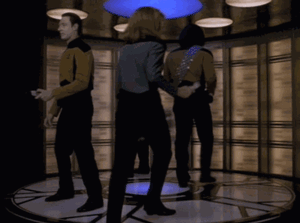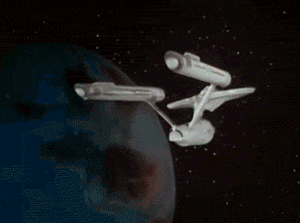When the away team prepares to beam down, they invariably assume the transporter formation: standing upright, usually with arms slack aside, all facing the camera. When they beam down, they reappear in the same formation and poses, as that's how the transporter works.
However, they do this even when it makes little sense, such as when beaming into uncertain, hostile environments (where they usually proceed to draw phasers and look around in a defensive circle. Sometimes it gets more silly - on a few occasions, they prep their phasers, holster them, beam down, and immediately draw phasers again.
We know that the transporter works with any formation or pose; people and objects have been beamed lying down, holding large objects, holding each other in emergencies. But routine transportation always involves everyone standing facing the same direction.
Why do they do this? Is it somehow related to how the transporter works? Or is it purely for out-of-universe reasons?


